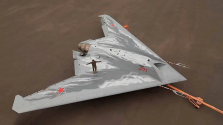Su-35 PESA is not much worse than most AESA. It all depends on the power generation.
Power generation is the key.
Su-35s was always meant for a very specific role first and foremost: stopgap 5th gen counter in DEF-CA situation - because US stealth proliferation was a thing (2010s f-22 problem...as was seen back then), and there was a good market niche for countries trying to defend against them.
Originally it was meant to be just a stopgap until su-57(which was meant to be delivered in 2015), but since it got massively delayed - stopgap became even more vital.
Su-35 is a very capable normal gen 4+ MRF of course, but that's secondary - there are better fighters and even flankers for that.
5th gen stopgap defense is how Sukhoi positioned su-35s to PLAAF(remember - it began as an export fighter! Arguably PLAAF is the only force where it went as planned, a safeguard), it's how it managed to get VKS orders (again, it wasn't the original plan, VKS paid from it's own pocket for su-27sm-123 because su-57 will come tomorrow...yeah, smart, I know); it's how it was sold to Iran.
For that specific role it really needed one specific spec - to get fire solution against stealthy opponent at competitive BVR ranges, I.e. to narrow-beam extreme amounts of energy and bruteforce stable return. On 2000/2010s technology, powerful PESA is better at it than AESA, simple as that; without making a whole radar and fcs from a blank sheet, AESA advantages aren't worth the investment.
Heck, even now, a decade later in this specific metric, N035 is probably the most capable fighter radar out there. Certainly more powerful (and at much wider range of angles!) than, say, N036.
Everything else (like extreme track range against 1...3m2 targets) is a neat bonus, ensuring that Su-35 isn't just a single trick pony.

